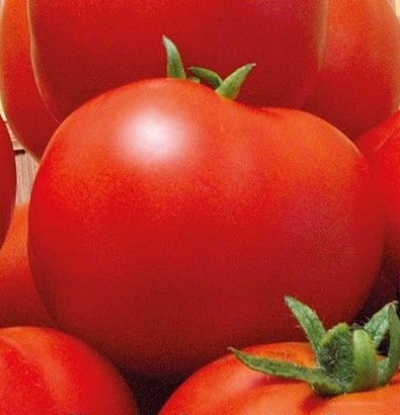
- Authors: Tarasenkov I.I., Bekov R.Kh.
- Year of approval: 2003
- Category: grade
- Growth type: determinant
- Appointment: fresh consumption, for whole-fruit preservation, for juice, for ketchup and tomato paste
- Ripening period: ultra early
- Ripening time, days: 85-90
- Growing conditions: for open ground
- Marketable fruit yield,%: 73-92%
- Bush size: undersized
The Maximka tomato can be a good choice for a wide variety of gardeners. However, only with a competent study of its features will it be possible to achieve solid success. And it is worth starting with finding out the features of the origin, as well as with the botanical characteristics of the plant.
Breeding history
The developers of this culture are II Tarasenkov and R. Kh. Bekov. Officially, it can be grown in consumer gardens since 2003. Therefore, we can say that it was created in one of the most difficult periods in history for breeding work. The organizations that have acted as originators are the well-known Agrofirma Poisk and the Federal Scientific Center for Vegetable Growing.
Description of the variety
The Maximka tomato is distinguished by a determinant type of development. By default, this crop is suitable for outdoor cultivation. Its bushes grow up to a maximum of 50-58 cm. They are characterized by semi-spreading growth. Other important properties:
average level of branching;
average level of foliage;
moderately long leaves of simple green color.
The main qualities of the fruit
The share of berries with the required commercial characteristics ranges from 73 to 92%. This variation clearly demonstrates the importance of good farming practices. Initially, once formed, the berries are light green in color. As it ripens, it will change to an orange-red range. The mass of an individual berry can be 65-105 g.
The rest of the nuances are as follows:
flat-round shape;
fairly smooth and even skin;
bookmark on intermediate inflorescences;
the appearance of the first fruit over 6-7 leaves;
laying of the following fruits without separation by leaves;
the peduncle is devoid of a hint of an articulated structure.
Taste characteristics
The tomato pulp Maksimka has an average density. The share of dry matter ranges from 4.5 to 7.9%. The meatiness is quite decent. Water content with proper agricultural technology and normal soil moisture is uncharacteristic. The taste of tomato is sweet, sour notes are not found in it.
Ripening and fruiting
Maxima favorably stands out for its ultra-early development. Ripeness is reached within 85-90 days after the earliest seedlings hatch. Sometimes weather conditions cause quite serious deviations from this schedule. In most cases, the fruits are harvested from July 1 to August 15. But, of course, these dates can also be changed.
Yield
The productivity of the variety is highly dependent on the specific growing region. So, in the center of the European part, the spread is from 233 to 311 centners per hectare. In the Central Black Earth Region, this indicator ranges from 240 to 385 centners. The highest recorded yield can reach 459 centners per hectare. In personal subsidiary plots, fertility will change in a similar way. Since the difference between minimum and maximum efficiency is palpable, much attention must be paid to agricultural technology.The usual collection in a private household is 7-8 kg per 1 m2.
The timing of planting seedlings and planting in the ground
It is necessary to spread the seeds of Maksimka in containers filled with soil in the last decade of March. With normal development, seedlings can be transferred into the ground from May 20 to 30. Sometimes the weather or the peculiarities of the development of plants greatly changes this schedule. But for beginners it is better not to risk it again.

Growing tomato seedlings is an extremely important process, because it largely depends on whether the gardener can harvest at all. All aspects must be taken into account, from seedbed preparation to planting in the ground.
Landing scheme
It is advisable to plant such a tomato according to the 60x60 cm system. The search for other schemes and approaches is deliberately irrational.

Growing and caring
Maksimka needs top dressing twice a month. Usually watering is carried out every 4-5 days. You need to increase them only in extreme heat. The bushes form 3 stems. In the last week, before transshipment into open ground, the plants are hardened, while the air temperature is 14 degrees.




A plant needs different micronutrients at each stage of growth. All fertilizers can be divided into two groups: mineral and organic. Folk remedies are often used: iodine, yeast, bird droppings, eggshells.
It is important to observe the rate and period of feeding. This also applies to folk remedies and organic fertilizers.
Disease and pest resistance
The Maximka tomato often suffers from late blight infection. Other diseases are less likely. However, in any case, preventive treatments will be strictly required.



























































































